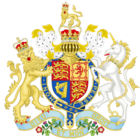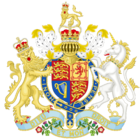Parks Regulation Act 1872 facts for kids

|
|
| Long title | An Act for the regulation of the Royal Parks and Gardens. |
|---|---|
| Citation | 35 & 36 Vict. c. 15 |
| Dates | |
| Royal assent | 27 June 1872 |
| Commencement | 27 July 1872 |
| Other legislation | |
| Amended by | Parks Regulation (Amendment) Act 1974 |
| Text of statute as originally enacted | |
| Parks Regulation (Amendment) Act 1974 | |
|---|---|
| Act of Parliament | |

|
|
| Long title | An Act to amend further the Parks Regulation Act 1872. |
| Citation | 1974 c. 29 |
| Dates | |
| Royal assent | 17 July 1974 |
| Other legislation | |
| Amends | Parks Regulation Act 1872 |
The Parks Regulation Act 1872 was a law made by the Parliament of the United Kingdom. This law was created to help manage and keep safe 17 special parks, known as Royal Parks. Most of these parks were in London, with two located in Scotland.
Over time, parts of this 1872 law were changed or removed. For example, some sections were cancelled by the Parks Regulation (Amendment) Act 1926. Later, the Parks Regulation (Amendment) Act 1974 made more changes. It said that park keepers had to be officially sworn in as police officers. It also renamed most of them to the Royal Parks Constabulary. However, the Kew Constabulary remained a separate police force.
Eventually, the Serious Organised Crime and Police Act 2005 made big changes. It got rid of the Royal Parks Constabulary. It also took away most of the special powers the Kew Constabulary had in other Royal Parks. Today, the 1872 Act doesn't have much effect anymore.
Contents
What Rules Did the Act Set?
The Parks Regulation Act 1872 set out rules for people visiting the Royal Parks. It also explained what would happen if someone broke these rules.
Rules and Fines
The law listed different actions that were not allowed in the parks. If someone broke a rule, park keepers could arrest them. They could also be fined money. For example, giving a false address to a park keeper could lead to a fine. Attacking a park keeper was a more serious offence. It could result in a larger fine or even time in prison.
Any new rules for the parks had to be shown to the Houses of Parliament. If Parliament didn't approve a new rule within a month, it would be removed. The law also said that all park rules had to be clearly displayed for everyone to see.
Powers of Park Keepers
The Act gave park keepers special powers. They could arrest people who broke the rules listed in the law. Park keepers could also ask other people for help if they needed to arrest someone.
The law stated that park keepers had many of the same powers as regular police constables. This meant they could act like police officers within the parks. Regular police officers from the local area, like the Metropolitan Police District in London, also had powers within the Royal Parks.
Royal Parks Listed in the Act
The Parks Regulation Act 1872 specifically mentioned the parks it covered. These were important green spaces for the public.
Parks in London
- Hyde Park
- St James's Park
- Green Park
- Kensington Gardens
- Parliament Square Gardens
- Regent's Park
- Kennington Park
- Primrose Hill
- Victoria Park
- Battersea Park
- Greenwich Park
- Kew Gardens, Pleasure Grounds and Green
- Hampton Court Park, Hampton Court Gardens and Green
- Richmond Park and Green
- Bushy Park
Parks in Scotland
- Holyrood Park
- Linlithgow Peel and Park

